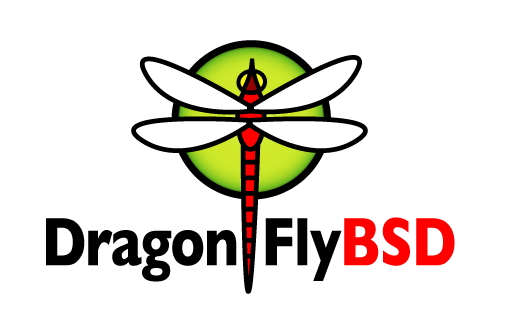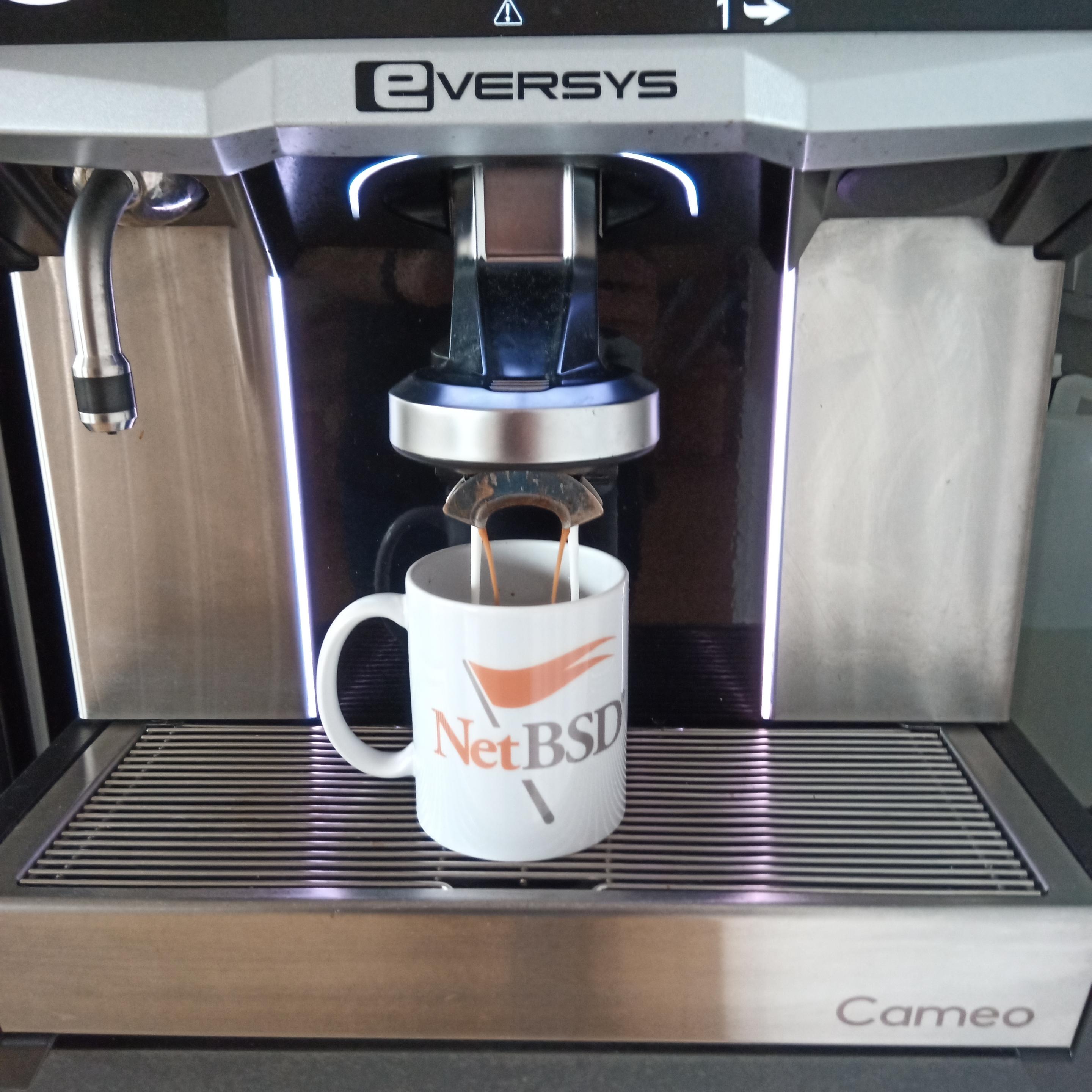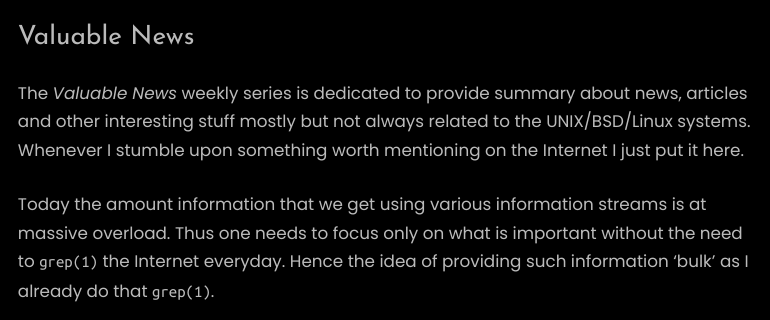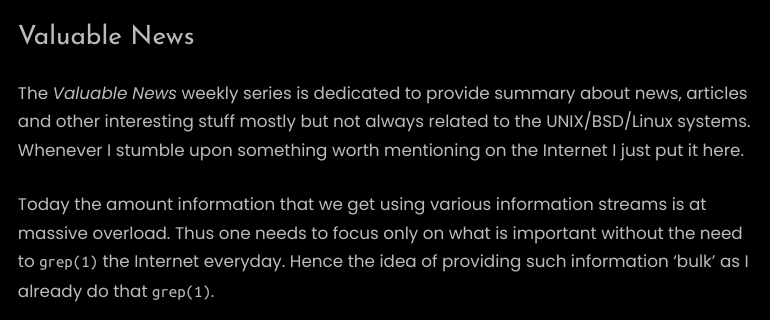Search results for tag #netbsd
10 days to go!
Minimal CDN on OpenBSD base with just two packages.
https://it-notes.dragas.net/2024/08/29/make-your-own-cdn-openbsd/
#EuroBSDConAdvent #EuroBSDCon #BSD #FreeBSD #OpenBSD #NetBSD #DragonFlyBSD #ZFS #PF #RunBSD
 boosted
boostedI suppose it should be considered quite impressive that a 266 MHz SuperH machine running #NetBSD can compile more than 10,000 packages in just 64 megs of memory:
https://pkg.zia.io/pub/pkgsrc/packages/NetBSD/sh3el/10.0_2025Q2/All/
I love reading the stuff you post. Thanks for sharing! Even just trying to imagine writing programs where I'd have to specify from where the next instruction will be loaded is an interesting mental challenge. All of those old machines are fascinating :)
 boosted
boostedNetBSD 11 running in 36 megs (Mac LC III+) is enough to compile large packages like Perl. Does Linux really need 64 megs just to run? Can you compile on it?
It is amazing to think about how much was possible in hundreds or thousands of bytes. We need to resurrect more of that magical software.
NetBSD-powered CDN: caching, TLS and performance on a shoestring.
https://it-notes.dragas.net/2024/09/03/make-your-own-cdn-netbsd/
#EuroBSDConAdvent #EuroBSDCon #BSD #FreeBSD #OpenBSD #NetBSD #DragonFlyBSD #ZFS #PF #RunBSD
A little more than a week from now, #BSD people will start our trek to #Zagreb for EuroBSDcon 2025 (Sep 24-28).
You can join us there!
Program https://events.eurobsdcon.org/2025/schedule/
Register https://2025.eurobsdcon.org/registration.html
Main site https://2025.eurobsdcon.org/
#eurobsdcon #freebsd #netbsd #openbsd #conference #freesoftware #libresoftware
 boosted
boostedOh, looks like there is one problem with using cash register as a server 
The Intel Atom N2800 doesn't support VT-x, so I can't use nvmm NetBSD hypervisor. Looks like the only one option to sandbox some services, which should be exposed outside, is to use chroot and sandboxctl: https://cdn.netbsd.org/pub/pkgsrc/current/pkgsrc/sysutils/sandboxctl/
12 days to go!
Same concept on OpenBSD: WireGuard + PF + ad-blocking included.
https://it-notes.dragas.net/2023/04/03/make-your-own-vpn-wireguard-ipv6-and-ad-blocking-included/
#EuroBSDConAdvent #EuroBSDCon #BSD #FreeBSD #OpenBSD #NetBSD #DragonFlyBSD #ZFS #PF #RunBSD
@krutonium @landley @geerlingguy IDK but I also didn't knew that #32bit #ARM (i.e. #AMRv5r11 as used by the #RaspberryPi #Pi0 / #Pi0W) is out of patent protection...
- I started @OS1337 as an effort to build a "legacy-friendy" minimalist #toybox + #musl / #linux distro as a basis for #firmware (i.e. for a #minimalist #embedded system like an applianced "#SSH-#Terminal" in critical IT)…
Killing non-#64bit support in Linux would be a death sentence for many #EmbeddedSystems.
- And I don't think they can all be migrated to i.e. #NetBSD, as it already took huge efforts to get them away from #MSDOS & #WindowsEmbedded…
 🔰 🇦🇺 boosted
🔰 🇦🇺 boostedTIL: NetBSD has the file NetBSD.el in /usr/share/misc/ for setting its C programming style in EMACS
13 days to go!
WireGuard + IPv6 + ad-blocking on FreeBSD – private, secure, minimal.
#EuroBSDConAdvent #EuroBSDCon #BSD #FreeBSD #OpenBSD #NetBSD #DragonFlyBSD #ZFS #PF #RunBSD
@ball no idea about 5B (though it seems that not a lot of OS can run well on it at this point, from a quick search online), but in the 4B #NetBSD is amazing!
The only "gotcha" is that you have to do the UEFI boot [1] on it, otherwise NetBSD won't recognize all drivers. Thus you boot the UEFI firmware off the SD card and then boot the OS from an external driver. However, once you set this up, it's amazing. You can max out all the RAM, overclock the thing and NetBSD provides the rest!
Dear friends of BSD Cafe, I've just approved the 500th user for this instance.
That's right, the 500th friend has just joined the BSD Cafe's Mastodon instance.
This calls for a celebration! 




EDIT: 500 users are currently registered, not counting those who moved, left, or started self-hosting.
14 days to go!
Benchmarks: FreeBSD bhyve vs Proxmox (KVM) – strengths and trade-offs.
https://it-notes.dragas.net/2024/06/10/proxmox-vs-freebsd-which-virtualization-host-performs-better/
#EuroBSDConAdvent #EuroBSDCon #BSD #FreeBSD #OpenBSD #NetBSD #DragonFlyBSD #ZFS #PF #RunBSD
 boosted
boosted@kzimmermann I would like a #RaspberryPi 4B or 5B but I have doubts about #NetBSD on them.
 boosted
boostedIf you run NetBSD in a qemu VM, you can share a directory via VirtFS.
qemu-system-aarch64 -virtfs local,path=/wherever,security_model=mapped-xattr [...]
You need vio9p(4) in your kernel, and then mount it via
mount_9p -cu /dev/vio9p0 /mnt
What tickles me about this is that this uses 9p, the Plan 9 Filesystem Protocol. :-)
Quick write-up for my students:
https://stevens.netmeister.org/631/vm-shared-dir.html
15 days to go!
Forging a FreeBSD backup stronghold with ZFS, jails and send/recv.
#EuroBSDConAdvent #EuroBSDCon #BSD #FreeBSD #OpenBSD #NetBSD #DragonFlyBSD #ZFS #PF #RunBSD
that supports Gemini, Gopher and Finger. Written in C, with a privsep design in mind.
Telescope is now available on pkgsrc (below you can see it running on SPARC). With a few patches [1], it builds and runs fine on Solaris too.
Thanks @op@bsd.network, @thomasadam@bsd.network, and others for contributing to this project.
[0] https://telescope-browser.org/
[1] https://github.com/NetBSD/pkgsrc/tree/trunk/net/telescope/patches
Advanced Programming the UNIX Environment
Some additional hints to set up your NetBSD environment for this class:
https://stevens.netmeister.org/631/vm-setup.html
With all sources extracted, familiarize yourself with ctags(1) et al to make browsing code a breeze:
Latest 𝗩𝗮𝗹𝘂𝗮𝗯𝗹𝗲 𝗡𝗲𝘄𝘀 - 𝟮𝟬𝟮𝟱/𝟬𝟵/𝟬𝟴 (Valuable News - 2025/09/08) available.
https://vermaden.wordpress.com/2025/09/08/valuable-news-2025-09-08/
Past releases: https://vermaden.wordpress.com/news/
#verblog #vernews #news #bsd #freebsd #openbsd #netbsd #linux #unix #zfs #opnsense #ghostbsd #solaris #vermadenday
Latest 𝗩𝗮𝗹𝘂𝗮𝗯𝗹𝗲 𝗡𝗲𝘄𝘀 - 𝟮𝟬𝟮𝟱/𝟬𝟵/𝟬𝟴 (Valuable News - 2025/09/08) available.
https://vermaden.wordpress.com/2025/09/08/valuable-news-2025-09-08/
Past releases: https://vermaden.wordpress.com/news/
#verblog #vernews #news #bsd #freebsd #openbsd #netbsd #linux #unix #zfs #opnsense #ghostbsd #solaris #vermadenday
16 days to go!
FreeBSD tips: native read-only root filesystem, simple and effective.
https://it-notes.dragas.net/2024/05/31/freebsd-tips-and-tricks-native-ro-rootfs/
#EuroBSDConAdvent #EuroBSDCon #BSD #FreeBSD #OpenBSD #NetBSD #DragonFlyBSD #ZFS #PF #RunBSD
Adventures in porting a Wayland Compositor to NetBSD and OpenBSD https://lobste.rs/s/eipoef #video #netbsd #openbsd
https://youtu.be/oo_8gnWQ4xo
 boosted
boostedAdvanced Programming the UNIX Environment
Our reference platform for this class is NetBSD. Some ways to get set up are:
Use an AWS image:
https://stevens.netmeister.org/615/netbsd-amis.html
Create your own AWS image:
https://www.netmeister.org/blog/creating-netbsd-ec2-amis.html
https://www.netmeister.org/blog/netbsd-amd64-ami.html
Install NetBSD on a Linode:
https://www.netmeister.org/blog/netbsd-on-linode.html
Use UTM / qemu:
https://stevens.netmeister.org/631/utm/
17 days to go!
The story of migrating an entire server from Proxmox to FreeBSD.
https://it-notes.dragas.net/2024/10/21/from-proxmox-to-freebsd-story-of-a-migration/
#EuroBSDConAdvent #EuroBSDCon #BSD #FreeBSD #OpenBSD #NetBSD #DragonFlyBSD #ZFS #PF #RunBSD
![[?]](https://zia.io/media/c7d30b21a674a70256affdc92d62b3c664a56e41b422a6fa74796f9af4cc391c.png)






